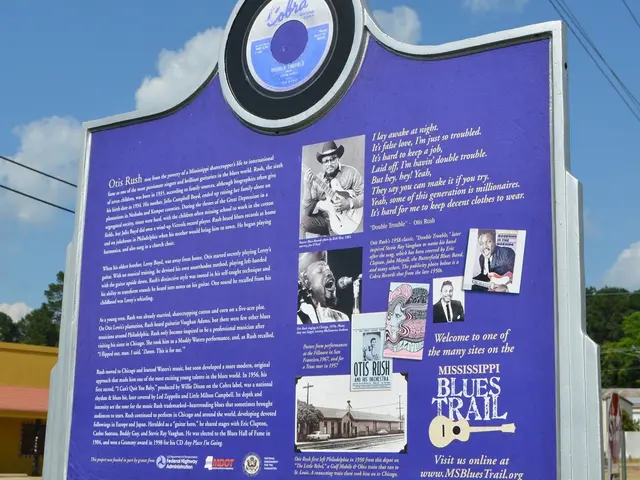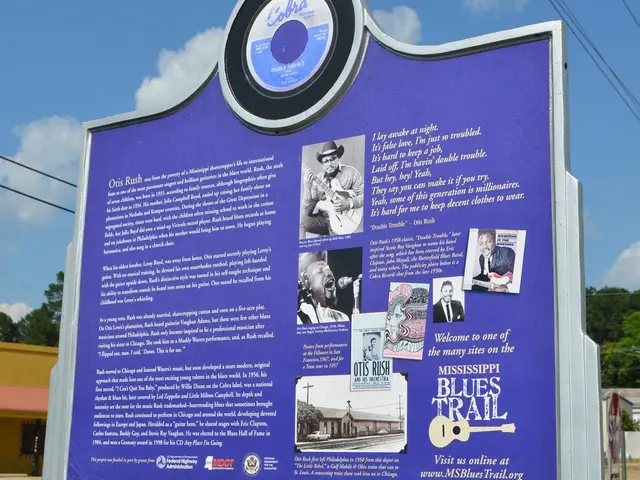U.S. Proposes Expensive Overhaul for Outdated Air-Traffic Management Infrastructure
Modernizing the Skies: Sean Duffy's Plan for a Revolutionized Air Traffic Control System
Prepare for takeoff, folks! U.S. Transportation Secretary Sean Duffy is gunning for a fresh era in air travel, proposing a groundbreaking plan to modernize the United States' crumbling air traffic control system.
The plan, unveiled during a Thursday event, aims to address persistent airport congestion, delays, and safety concerns by ushering in a new, top-tier air traffic control system. This update includes upgrades to outdated radar and telecommunications systems, air traffic control towers, and facilities, as well as an increase in air traffic controller staffing.
At the announcement, Duffy declared, "We have a system here that's not worth saving. We actually have to build a brand new, state-of-the-art air traffic control system... This is long past due"[1]. The modernization project, expected to take three to four years, could cost "tens of billions of dollars"[1], but a precise figure has yet to be set.
The Federal Aviation Administration (FAA) has requested funding for several key elements, such as purchasing new radios, network connections, replacing 618 radars, installing anti-collision technology at 200 airports, building six new air traffic control centers, and expanding its ADS-B network of real-time aircraft traffic information[1].
The FAA's active appeal for change stems from a litany of woes that have been accumulating for years, exacerbated by recent high-profile near-misses, catastrophic crashes, and a general surge in public alarm.
As part of the modernization initiative, Duffy is seeking higher-level engagement from the industry, noting conversations with Verizon CEO Hans Vestberg every two weeks on reform efforts[4]. Verizon scored a $2.4 billion FAA contract in 2023 to replace outdated telecom equipment[4].
However, the inclusion of Elon Musk's Starlink in the modernization plan remains uncertain[1]. Duffy couldn't guarantee Starlink's participation but acknowledged the potential benefits of space-based technologies[1].
The plan also calls for new funding to bolster air traffic controller hiring and retention, which currently stands 3,500 controllers short of its target[1].
The unmistakable urgency to act is shared by industry leaders such as Southwest Airlines CEO Bob Jordan, who emphasized, "We have a problem, and it will take all of us, it will take the money, it will take the effort, it will take a lot of will to get this done"[1].
Amidst the sea of changes, Duffy has ruled out privatization of the FAA[1], axing a proposal originally floated by President Donald Trump during his first term in 2017[1]. In its place, Duffy aims to secure at least $31 billion in spending[1], surpassing the $12.5 billion proposed initial spending on air traffic control reform by a U.S. House panel[1].
The modernization of the U.S. air traffic control system isn't just about robust infrastructure; it's also about safeguarding lives. The families of the 67 people killed in a mid-air collision between a U.S. Army helicopter and an American Airlines regional jet in January were in attendance at the announcement[1]. The event, therefore, resonated with a poignant sense of purpose and promise.
So buckle up, folks; we're in for a bumpy ride, but this revamped air traffic control system aims to make those bumps few and far between.
- The modernization plan for the U.S. air traffic control system, proposed by Transportation Secretary Sean Duffy, includes upgrading outdated radar and telecommunications systems, air traffic control towers, and facilities, and increasing air traffic controller staffing.
- To fund these upgrades, the Federal Aviation Administration (FAA) has requested funding for various key elements, including purchasing new radios, network connections, replacing radars, installing anti-collision technology at airports, building new air traffic control centers, and expanding its ADS-B network.
- The FAA's active appeal for change is partly due to a number of woes that have been accumulating for years, including recent high-profile near-misses, catastrophic crashes, and a surge in public alarm.
- Industry leaders, such as Southwest Airlines CEO Bob Jordan, have expressed support for the modernization initiative, recognizing the need for collaborative efforts and financial investments to address the persistent problems in air travel.
- The plan aims to ensure transportation safety by addressing congestion, delays, and safety concerns, which could lead to a more efficient and reliable air traffic control system. This not only benefits the aerospace and finance industries but also directly impacts travelers and their experiences during air travel.




